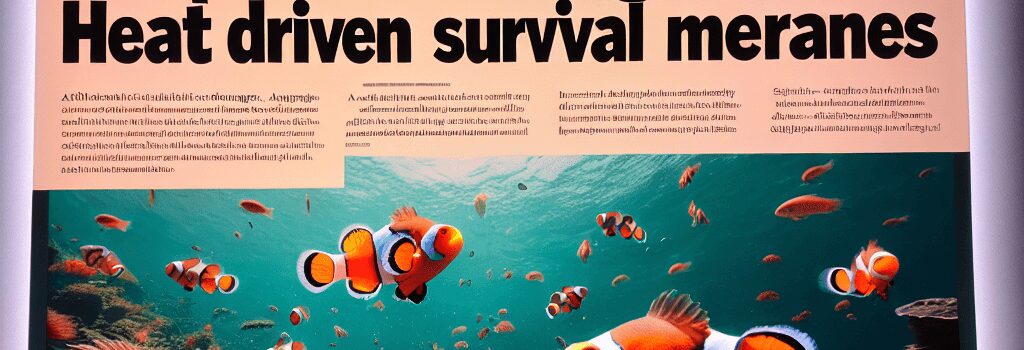Adaptive Shrinkage in Clownfish: Heat-Driven Survival Mechanisms

Introduction
Clownfish (Amphiprion percula) have long been icons of coral-reef resilience, thanks in part to Pixar’s Finding Nemo. Yet as climate change drives more frequent marine heat waves, these fish face mounting physiological stress. A groundbreaking Science Advances paper (2025) now reveals that clownfish can actively shrink during thermal spikes, boosting survival rates from 25 percent baseline to as high as 78 percent under extreme conditions.
Study Design and Methodology
Between February and August 2023—coinciding with the NOAA’s fourth global bleaching event—researchers from Newcastle University tagged and photographed 67 breeding pairs of wild clownfish in Kimbe Bay, Papua New Guinea. Each individual was measured monthly using laser callipers accurate to 0.1 mm, while in-situ temperature loggers recorded anemone microhabitat readings every 4–6 days. The team correlated individual length fluctuations with ambient temperature anomalies, social rank, and breeding status.
Key Findings
- 101 of 134 tagged fish (75%) exhibited at least one shrinkage event during peak heat episodes.
- Shrinking increased survival probability to 78%, compared with 24% in non-shrinkers.
- Dominant–subordinate pairs that synchronized size reduction fared best, highlighting a socially mediated adaptive response.
“We were surprised at how rapidly clownfish adjust their linear size—this isn’t just mere weight loss but a reversible reduction in vertebral length,” said Melissa Versteeg, lead author and PhD candidate.
Mechanisms of Shrinkage: Endocrine and Cellular Insights
While the exact process remains under investigation, experts hypothesize a neuroendocrine cascade involving thyroid hormones (T3/T4) and cortisol. Elevated temperatures may trigger osteoclastic activity, where bone-resorbing cells reduce vertebral dimensions. Parallel studies published in Endocrinology Letters (March 2025) document heat-induced upregulation of deiodinase enzymes, which convert inactive T4 to bioactive T3, modulating growth rates at the cellular level.
Ecological and Evolutionary Implications
This shrinkage trade-off extends lifespan during acute stress but incurs reproductive costs. Data show a 12–18% decline in clutch size post-heat wave, consistent with an energy reallocation model. Over successive generations, selective pressure may favor genotypes with enhanced shrink–grow plasticity, potentially altering population dynamics and reef community structures.
Technological Approaches to Monitoring Size Dynamics
Advances in AI-powered image analysis and underwater LIDAR enable noninvasive, high-frequency monitoring of individual fish morphology. A pilot project by the Coral Resilience Lab (University of Queensland, May 2025) uses convolutional neural networks to detect sub-millimeter changes in body length in real time, offering scalable tools for field ecologists.
Conclusions and Future Directions
This research underscores a previously underappreciated survival strategy among ectothermic vertebrates. Ongoing work aims to map the genetic basis of plastic shrinkage, quantify long-term fitness impacts, and integrate remote-sensing networks for broader ecological surveillance. As marine heat waves intensify, understanding and leveraging such adaptive responses will be critical for conservation and management of coral-reef ecosystems.
Additional Resources
- Versteeg, M. et al. (2025). “Thermal Stress–Induced Shrinkage in Clownfish.” Science Advances. DOI: 10.1126/sciadv.adt7079
- Smith, L. & Huang, X. (March 2025). “Thyroid-Mediated Morphological Plasticity in Reef Fishes.” Endocrinology Letters.
- Coral Reef Watch (2025). “Global Bleaching Event Tracker.” NOAA.
“If this phenomenon proves widespread, it may explain observed declines in fish sizes across warming oceans,” notes Theresa Rueger, senior author.